Build your first embedded data product now. Talk to our product experts for a guided demo or get your hands dirty with a free 10-day trial.
Grafana is a popular open-source tool for real-time data visualization and analysis from various data sources. Users can create fully customizable dashboards that display key metrics, graphs, charts, and alerts through its interactive interface.
While this observability platform is powerful, it can be complex to start with, and it has numerous limitations that depend on your use case.
So, if you’re looking for Grafana alternatives, you’ve come to the right place.
Grafana is an open-source platform for data visualization that connects to many databases. It started out as a visualization tool that allows businesses to create, explore, and share interactive dashboards internally or with other stakeholders.
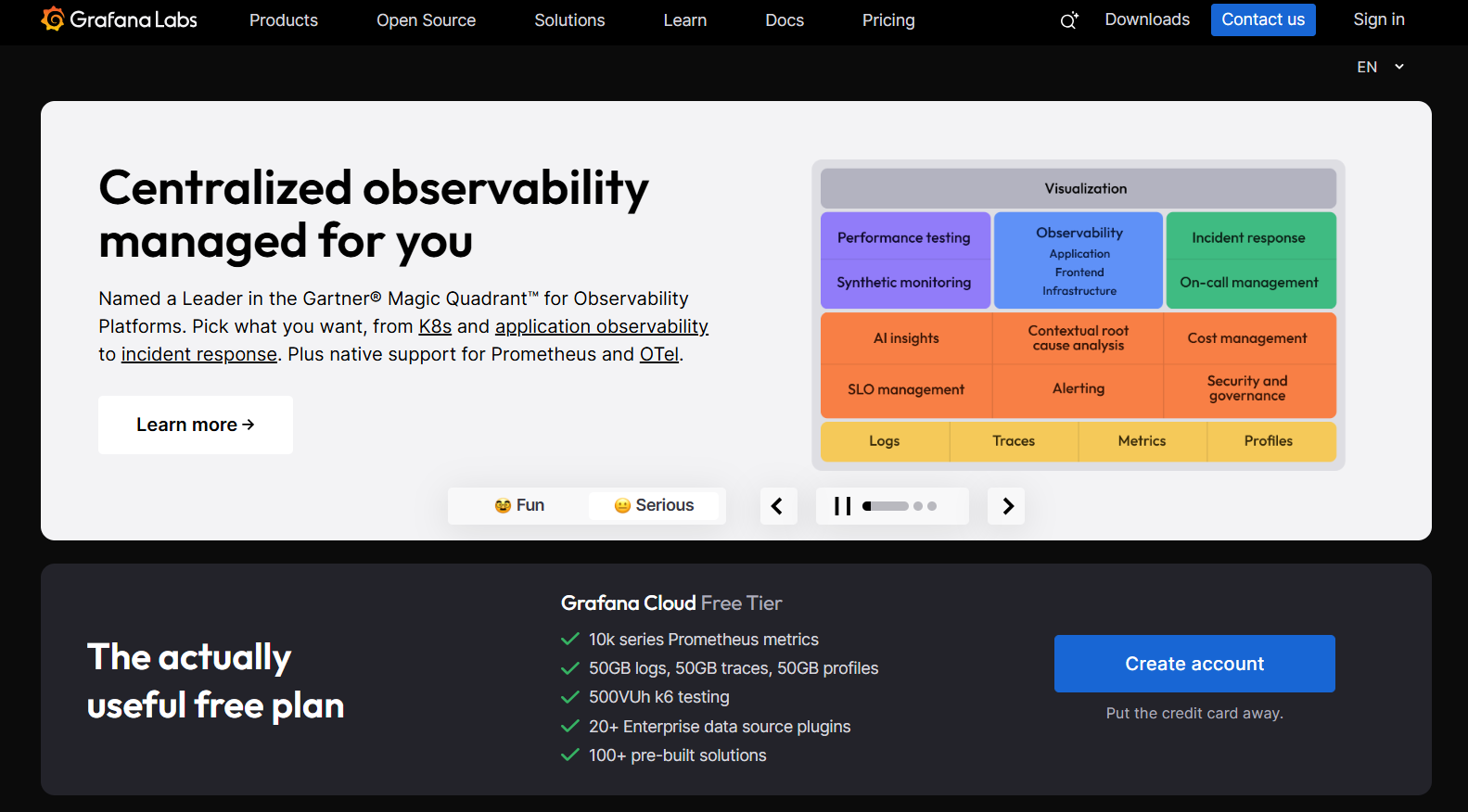
Some of the key uses for Grafana include:
Grafana has every functionality you may need for end-to-end data collection and visualization. However, there are some reasons why people look into alternatives.
Grafana has every functionality you may need for end-to-end data collection and visualization. However, there are some reasons why people look into alternatives.
Steep learning curve: Grafana can be difficult for beginners unfamiliar with time-series databases who do not know every query language possible.
“It is a steep learning curve, not just the product but all of the different connections that it supports.”
Limited built-in data storage: Grafana mostly relies on external data sources such as Prometheus and InfluxDB to fetch your data. This increases pricing but makes it more difficult to set up Grafana properly.
Scalability challenges: as you add more data sources and users, Grafana’s performance downgrades, which can be a big downside if you want the end-user to get fast, custom dashboards.
Alerting limitations: Grafana works well for setting up basic alerts e.g. in SaaS tools. However, if you need more granular alerts for specific actions, you must rely on third-party tools and plugins.
Role-based access control limitations: The free version of Grafana has fairly limited role-based access. This can be a huge obstacle in large organizations and when dealing with many end-users.
Limited customization: Grafana offers a decent number of visualization types and possibilities for customizing dashboards. However, some users may need more variety in visualizations and detailed customization options that they can only get with third-party plugins and manual coding and design.
Mohnish T.:
“…maybe a proper low light dropdown with clear UI if possible will be clear to understand.”
How good is your dashboard UX?
DOWNLOAD NOW!
✔️ FREE CHECKLIST: put your client-facing analytics to the test!

Whether you want to create customized dashboards or set up alerts for yourself or your end users, Grafana is just one of the many choices. Here are some alternatives that fit any budget.

Luzmo is an excellent Grafana alternative for software companies that want to go beyond monitoring and visualization and deliver a modern analytics experience directly inside their app. While Grafana provides great dashboards for system health and synthetic monitoring, Luzmo focuses on embedded analytics that help your users make smarter, data-driven decisions.
With Luzmo Studio, teams can build interactive dashboards using an intuitive visual builder, while Luzmo Flex gives developers complete freedom to customize layout, connect data from multiple sources, and control the full look and feel. For non-technical users, Luzmo IQ introduces AI-powered analytics that allows you to query data in natural language - simply ask a question, and IQ creates a chart instantly.
Behind the scenes, Luzmo Agent APIs automate analytics workflows and data delivery, even when you’re working with large volumes of data. The result is a smoother, faster, and more scalable overall experience for your end-users.
You can also share dashboards easily with your customers or internal teams, letting them explore and interact with data in real time. Unlike Grafana, Luzmo’s wide choice of visualization types - from bar charts to Gantt charts and heatmaps - makes it perfect for both technical and business use cases.
Luzmo is fully customizable, integrates seamlessly with your product, and scales effortlessly as your data grows. The best part? You can try it out for free or book a demo to see how Luzmo Flex, Studio, IQ, and Agent APIs can help you build better embedded dashboards than any other alternatives to Grafana.

Kibana is the top Grafana alternative for developers fluent in Javascript who want to visualize their Elasticsearch data. It lets you manage the Elastic stack (Elasticsearch, Beats, Logstash) and visualize data in customizable dashboards.
If you already use Elastic stack for your search and analytics, this is the first choice for data visualization. However, note that you don’t have many dashboards to choose from. Also, you must work with other tools in the ELK stack, limiting customization space.

If you want to visualize data for internal stakeholders and even end-users of your software, Tableau is one of the leading platforms in the BI industry. Launched by Salesforce, it is well-known for its huge variety of visualization types and integrations with the Salesforce ecosystem.
Conversely, Tableau can be very complex for beginners, especially if you want to use it in an embedded setting. You can solve this by hiring a Tableau expert, and there are plenty to go around. One thing you cannot solve so easily is the pricing, which can quickly go out of hand with many creators, users, and dashboard viewers.
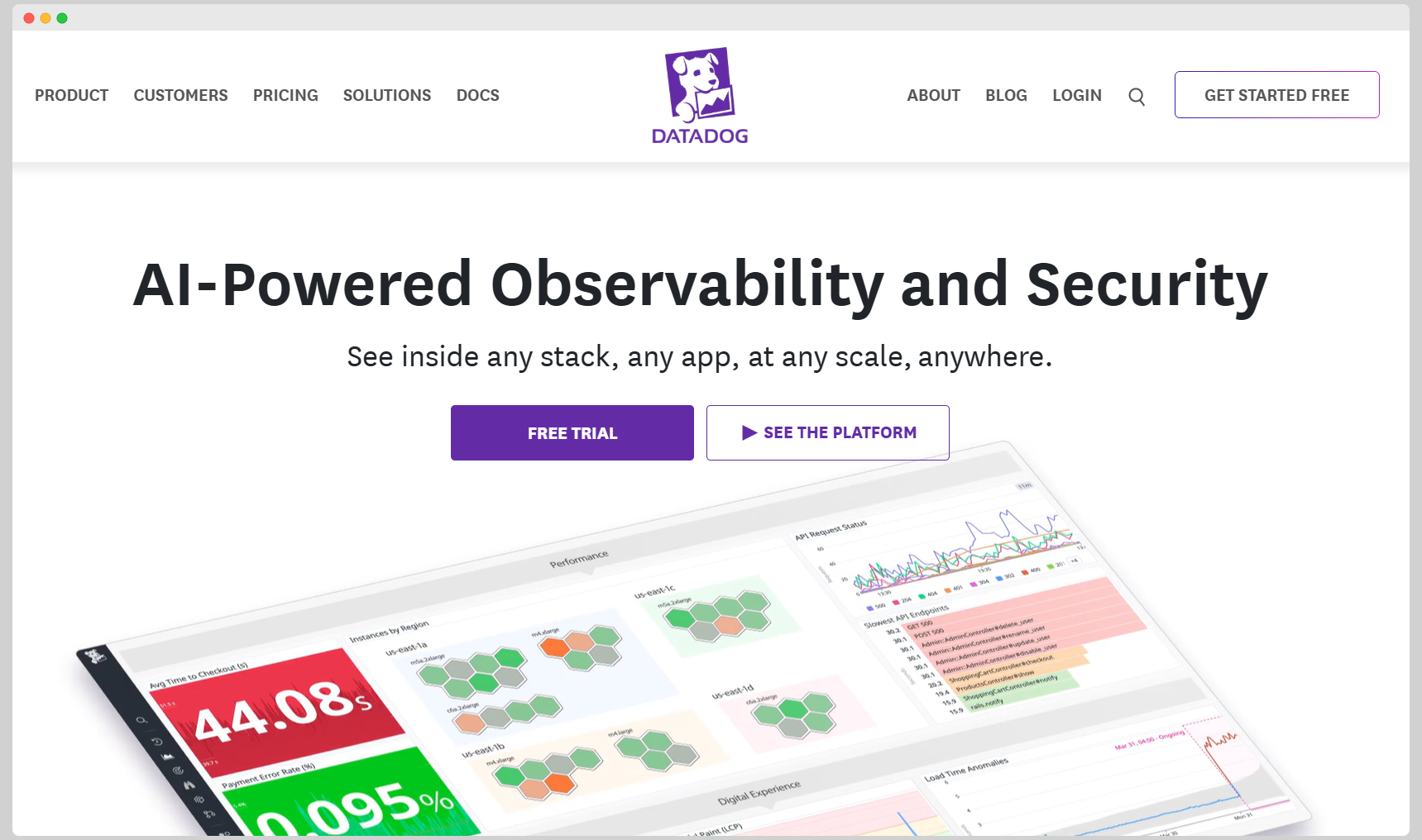
Datadog is one of the most popular cloud-based Grafana data visualization and monitoring alternatives. It covers multiple use cases such as infrastructure, logs, user experience and applications.
It offers 800+ integrations with various data sources and many dashboards you can try out of the box. Datadog retains your metrics for up to 15 months. In the more expensive plans, you get machine-learning-based alerts and live processes.
The downside of Datadog is that it can get pretty expensive since pricing is based on data usage. Also, the visualizations are limited compared to Grafana’s dashboards.
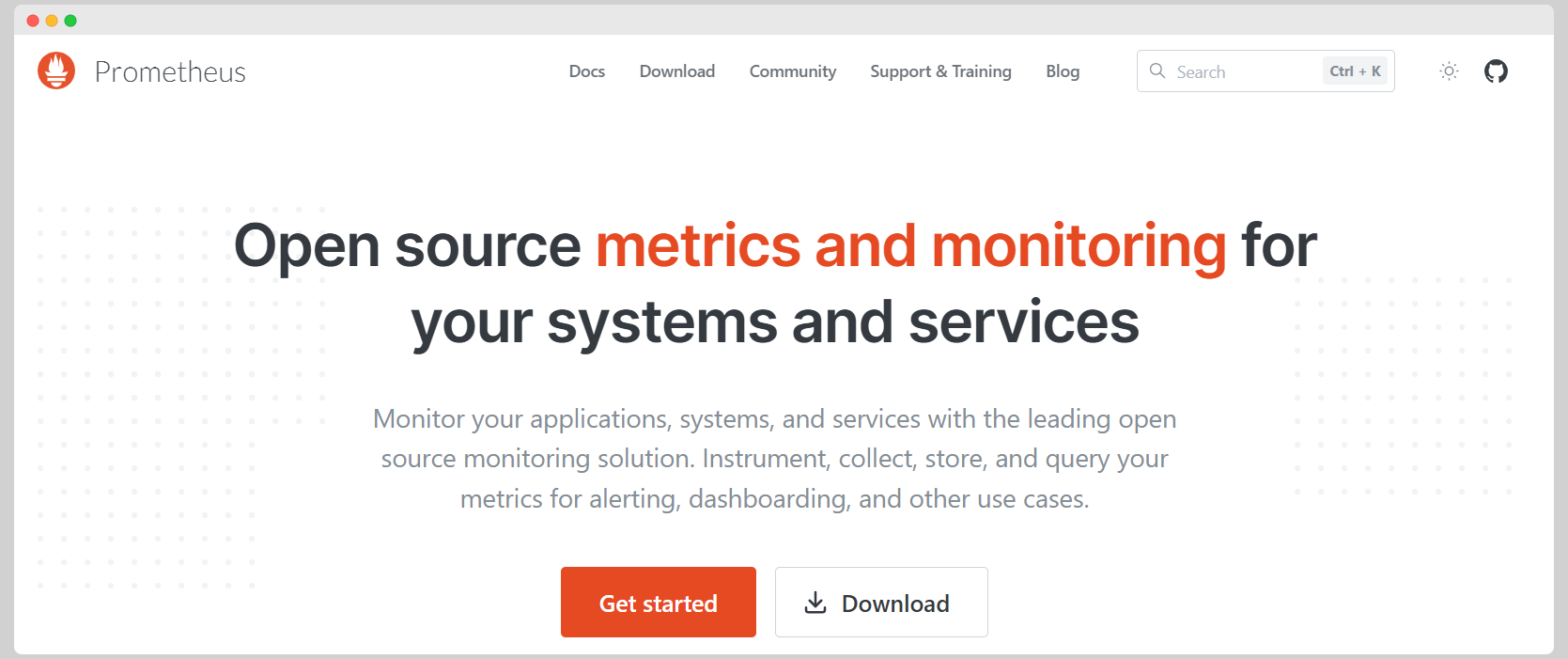
Prometheus is an open-source, high-performance system for collecting metrics and alerting. It works in real time and records metrics in a time series database and it is great for scaling. Given its strong time-series data support, it works well for Kubernetes monitoring.
One issue is that Prometheus is not a proper data visualization tool on its own, so you’ll likely pair it with a tool such as Grafana anyway. It also does not have native support for complex querying.
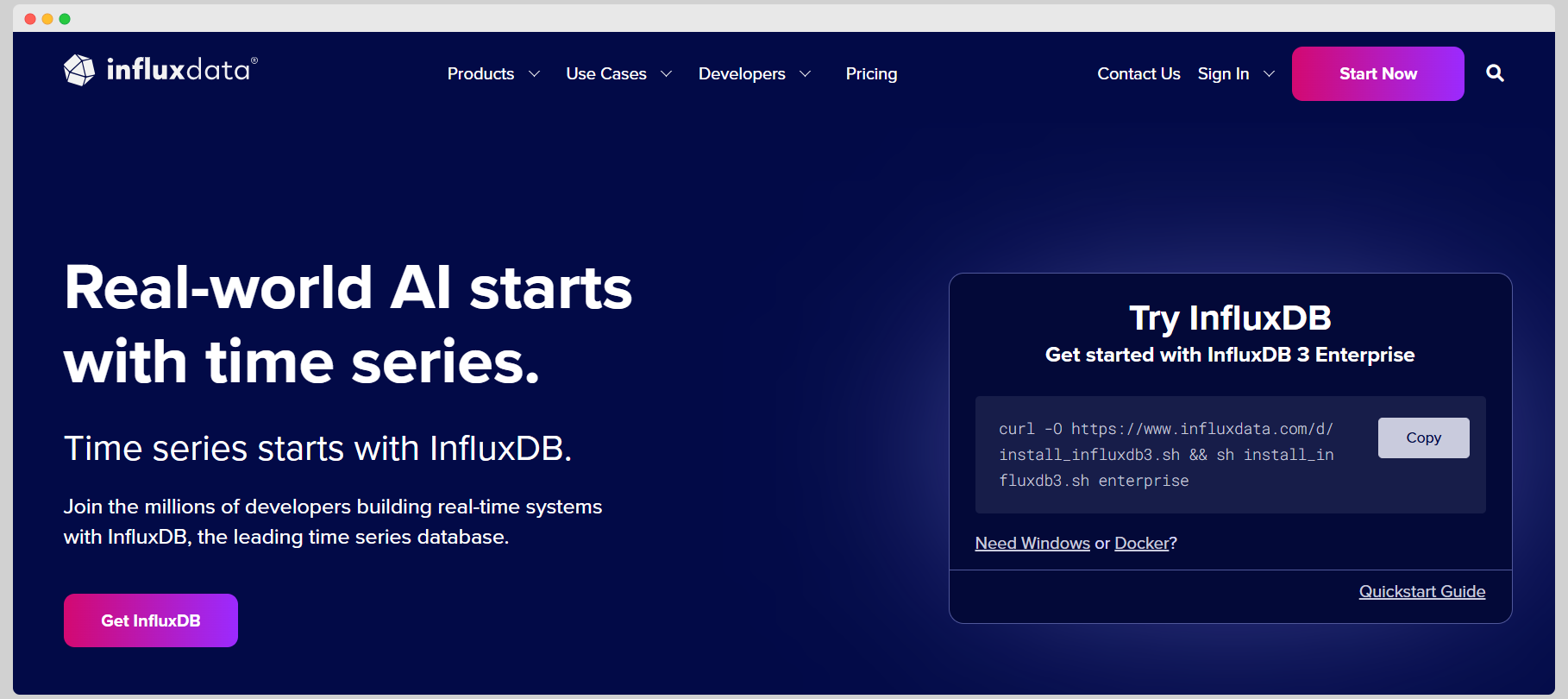
This is a purpose-built time-series database with a high write performance. It supports complex time-series queries and alerting, and it’s great for monitoring IoT and DevOps metrics. You can query data in InfluxDB by using SQL for real-time insights. It can be purchased in a fully managed or self-hosted version. InfluxDB supports over 300 integrations with various data sources and business apps.
The negative side of this platform is that compared to Grafana, it’s pretty limited in the types of visualizations it offers. Regarding data sources, there is not much flexibility beyond those not bound to time-series data and InfluxDB.

New Relic is a full-stack observability platform that offers advanced application performance monitoring (APM) features and deep performance insights for organizations with complex applications.
Compared to Grafana, New Relic can be very expensive. Another downside is that it’s primarily app-focused and does not have the varied customization options of Grafana and similar tools.
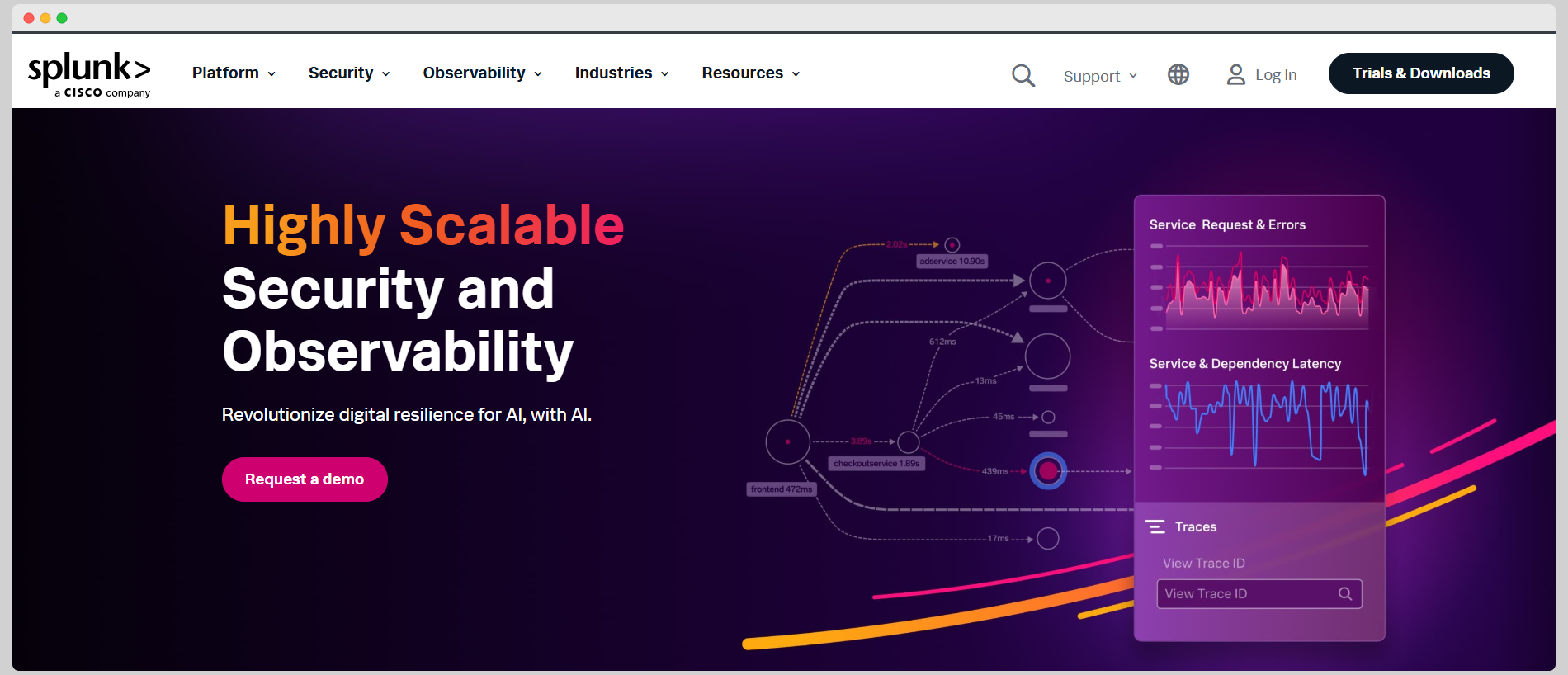
Splunk is a comprehensive platform for log analysis and real-time management of events with enterprise-grade features. It’s a superb choice for IT operations and security because of its many compliance capabilities. It works great for anomaly detection thanks to its machine learning and AI insights.
Compared to Grafana and other alternatives on this list, Splunk can be pretty pricey. It’s also log-centric so it lacks Grafana’s multi-source dashboard capabilities.
Grafana boldly promises to help with data visualization and alerting, but it’s not built for everyone. Complex onboarding, scalability issues, and problems with customization are all valid reasons to look elsewhere for an alternative solution.
With Luzmo, you can visualize your data in your app and give your end-users the power to understand data points in real-time, on their own terms. With powerful AI features and a variety of data sources, Luzmo can fit into any app.
Book a free demo with our team, and we’ll show you how it works.
Build your first embedded data product now. Talk to our product experts for a guided demo or get your hands dirty with a free 10-day trial.
